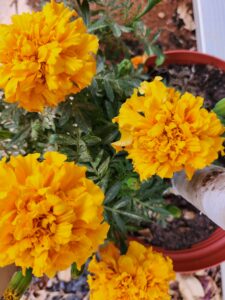Plant those Vegetables in a Straight Line…WHY?
by John Stanley
I trained as a horticulturist in the UK and then taught horticulture at university. When it came to practical exams food crops had to be in straight lines. Take a walk around suburbia today and most gardeners still plant food crops in straight lines. Why? Is there a logical reason why food crops should be segregated from the rest of the garden and look so regimented?
Globally, a revolution is taking place. More and more people are growing their own food crops to feed their families. This provides for their wellbeing, improves their health, provides a fresh assortment of edible products and saves them money.
The traditional way of growing food crops is being questioned, is there a better and easier way to feed the family from your own garden.
The new movement has highlighted three different ways of growing food crops. At our own farm, Chestnut Brae, near Nannup we are highlighting the different methods and incorporating them into our garden tours for the public.
Square Meter Garden
This style of growing food crops was developed by Mel Bartholomew when he literally started thinking outside the box and as a result developed a box for growing food crops. Being American it was called “Square Foot Gardening” and his book on this subject is packed full of ideas and how to grow a vegetable garden to feed a family in a square yard box divided up into square feet. He shows planting schemes for each square and how to rotate crops through the squares.
We constructed a square metre garden on the farm twelve months ago and one of the key points we learned was you need great growing soil in each square to be successful.
This method of growing means food crops are grown more intensively than the traditional methods of growing and since it is so dense, you also have less waste. Very few weeds germinate in these squares and in fact last year we did not need to weed any squares. If you have small urban garden this is an ideal growing method.
Foodscape Gardening
We stay in the USA for the next approach to food growing. Brie Arthur, the author of the book “Foodscape Revolution” is the guru on foodscaping.
Her approach is that a great garden in the 21 st century is a mix of ornamental plants and edible plants. See mixes her herbaceous borders with
edible and non-edible plants and achieves a great garden effect. The veg patch has now disappeared and the whole garden is an edible garden.
In the gardens at Chestnut Brae we use rhubarb, globe artichoke, Jerusalem artichoke, lettuce varieties and a range of herbs in our “ornamental’ garden and they make great effect. This is now one of the major garden trends in the Americas and should catch on in Australia.
Hügelkultur
For the third way of growing food crops lets look at a German system. Hügelkultur (pronounced hoo-gul—culture) is based on an understanding of how a forest develops and grows. Start by digging a trench and burying wood debris, at Chestnut Brae we obviously use chestnut pruning’s, but apple or other hardwood are ideal. I would not use pine branches.

Some gardeners actually place the branches on the soil surface, but we have had better results by digging a trench and burying them. We then cover them with well matured compost and raise the garden bed above the soil. Place a layer of soil on the top and then plants into the mound. We use worm water for a feed.
Our vegetables just keep growing and growing using this system. We started with one bed using this technique and are now converting the whole food garden over to this system.
All three food garden techniques are on display Chestnut Brae and are part of our tours. If you are interested in a tour go to our webpage
www.chestnutbrae.com.au and book a tour. We do tours daily except Tuesdays.

